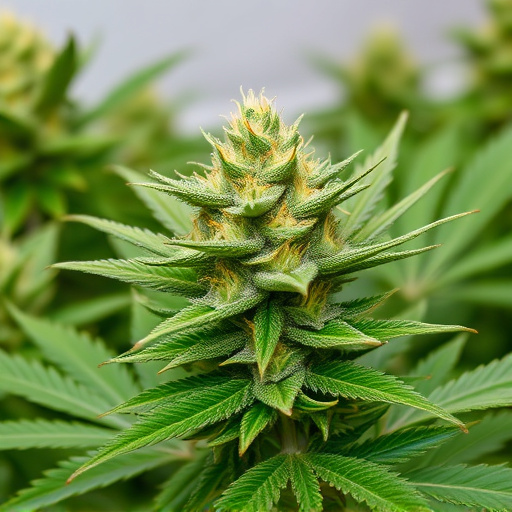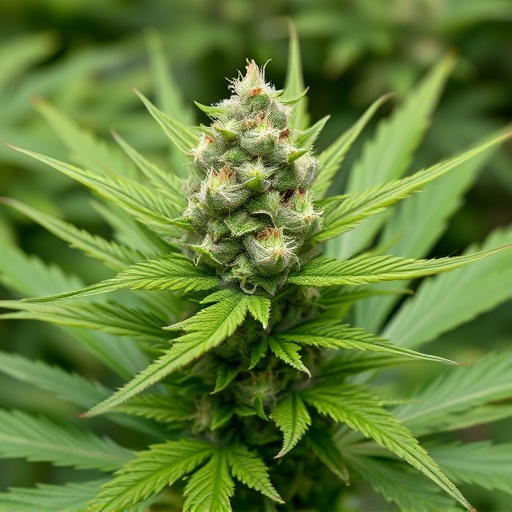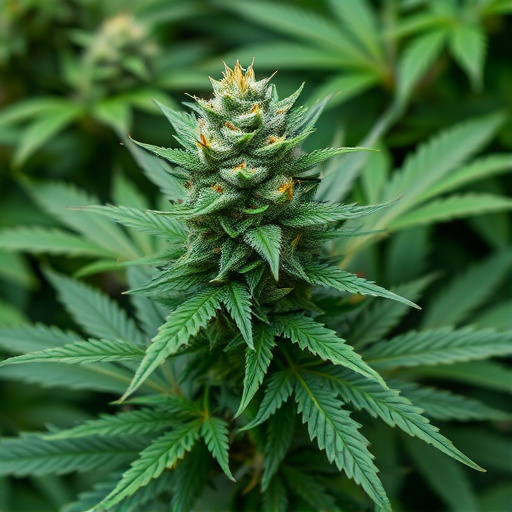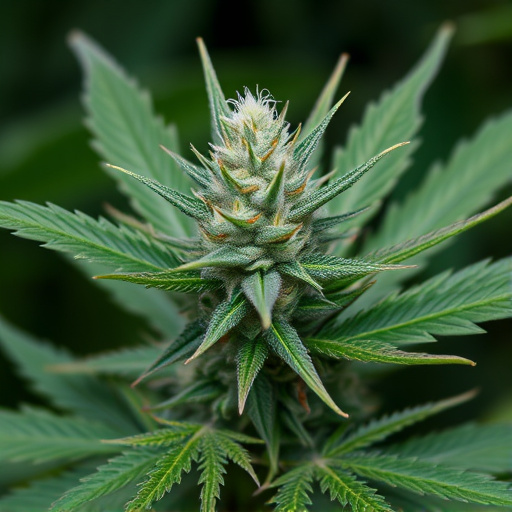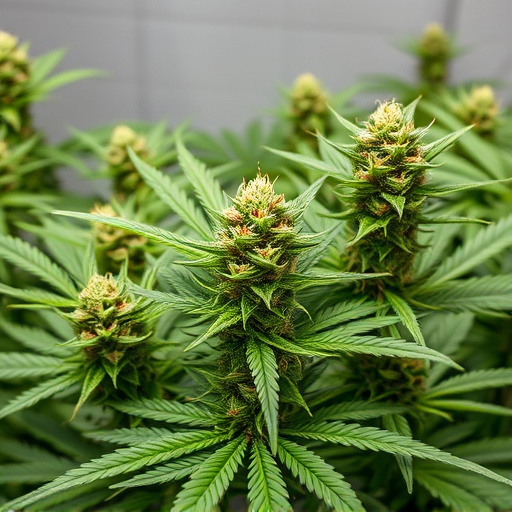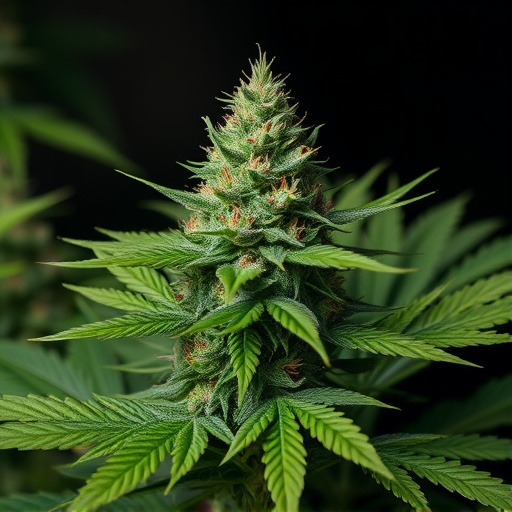Sativa cannabis strains have gained popularity as a natural, non-psychoactive way to manage chronic pain due to their high concentrations of tetrahydrocannabinol (THC) and cannabidiol (CBD). THC interacts with the endocannabinoid system to block pain signals while CBD reduces inflammation. These strains offer an energizing alternative for daytime use, helping with conditions like arthritis, neuropathic pain, and chronic back pain without excessive drowsiness. Cannabis' unique cannabinoid profiles make it an appealing adjunctive therapy for pain management.
Cannabis flower has emerged as a potential aid for managing pain, offering a natural alternative to conventional medications. This article explores how understanding cannabis and its active compounds, particularly sativa cannabis strains, can provide significant relief for chronic pain sufferers. We delve into the science behind cannabinoids’ analgesic properties, shedding light on their effectiveness in mitigating pain without harsh side effects. By examining these diverse strains, individuals seeking holistic pain management can make informed choices.
- Understanding Cannabis and Its Effects on Pain Relief
- The Role of Sativa Cannabis Strains in Managing Chronic Pain
- Exploring Different Cannabinoids and Their Analgesic Properties
Understanding Cannabis and Its Effects on Pain Relief
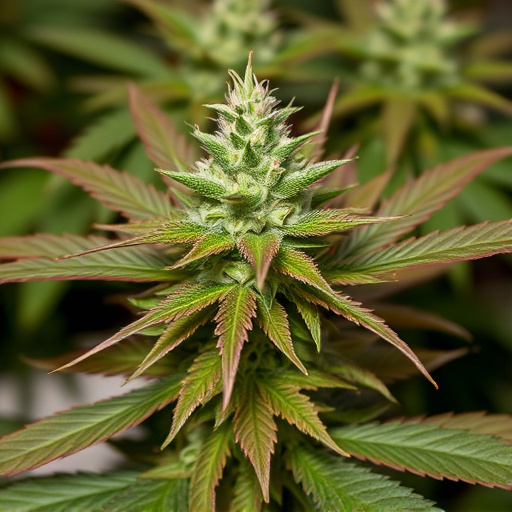
Cannabis has gained attention for its potential pain-relieving properties, offering a natural alternative for managing chronic and acute pain. At the heart of this is the plant’s ability to interact with our endocannabinoid system (ECS), which plays a key role in regulating pain perception and inflammation. Sativa cannabis strains are particularly renowned for their high concentrations of tetrahydrocannabinol (THC) and cannabidiol (CBD), two prominent cannabinoids known for their therapeutic effects.
THC, the psychoactive component responsible for the “high” associated with cannabis, has been shown to bind to specific receptors in the ECS, influencing pain signals transmitted to the brain. Meanwhile, CBD, a non-psychoactive cannabinoid, has gained popularity due to its anti-inflammatory and analgesic properties. Certain sativa strains, rich in these cannabinoids, can provide effective pain management by blocking pain pathways, reducing inflammation, and promoting relaxation. This natural approach to pain relief is becoming increasingly recognized as a valuable complement to traditional medical treatments.
The Role of Sativa Cannabis Strains in Managing Chronic Pain
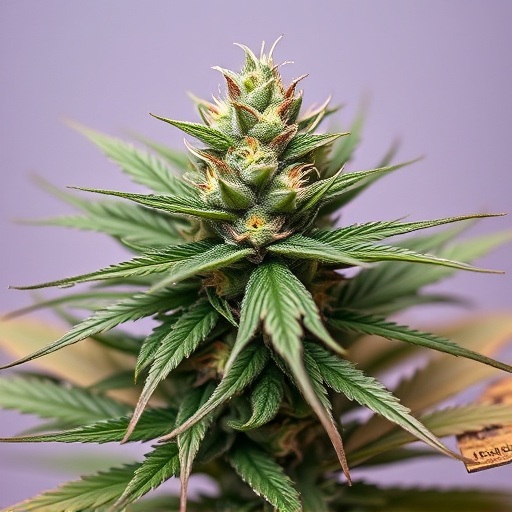
Sativa cannabis strains have gained significant attention for their potential in managing chronic pain, offering a natural alternative to traditional pharmaceuticals. These strains are known for their unique chemical composition, particularly high levels of tetrahydrocannabinol (THC) and cannabidiol (CBD). THC is responsible for the plant’s psychoactive effects, while CBD has been widely studied for its anti-inflammatory and analgesic properties.
The interaction of these compounds with the body’s endocannabinoid system is believed to be key in alleviating pain signals. Sativa varieties often provide a more uplifting and energizing effect compared to their indica counterparts, making them popular choices for daytime use and managing pain without causing excessive drowsiness. Many patients report that sativa cannabis strains help reduce chronic back pain, arthritis symptoms, and neuropathic pain, offering a holistic approach to pain management.
Exploring Different Cannabinoids and Their Analgesic Properties
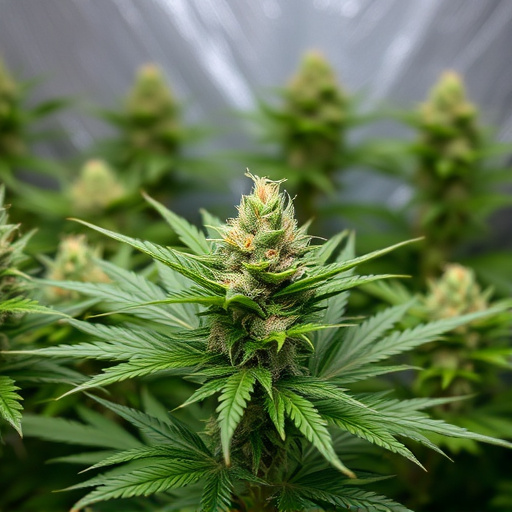
Cannabis flowers offer a complex mix of chemical compounds, among which cannabinoids play a pivotal role in its therapeutic effects, including analgesic properties (pain relief). There are over 100 known cannabinoids in cannabis, with two primary ones being THC and CBD. Tetrahydrocannabinol (THC) is renowned for its psychoactive effects, but it also exhibits potent pain-reducing capabilities. Studies suggest that THC interacts with the body’s endocannabinoid system to block pain signals, making it a valuable tool for managing chronic conditions like arthritis and neuropathic pain.
Conversely, Cannabidiol (CBD), prevalent in many sativa cannabis strains, doesn’t produce a “high.” Instead, it has been increasingly recognized for its non-psychoactive analgesic properties. Research indicates that CBD can reduce inflammation and interact with other receptors involved in pain perception. This dual action makes cannabis an attractive alternative or adjunctive therapy for those seeking relief from pain without the mind-altering effects of THC.
Cannabis, particularly its flowering varieties, offers a promising natural alternative for managing pain. The various cannabinoids present in sativa cannabis strains have been shown to interact with the body’s endocannabinoid system, providing analgesic effects that can help alleviate chronic pain symptoms. Further research is needed to fully understand the scope of cannabis as a pain management tool, but initial findings suggest it could be a game-changer for those seeking non-pharmaceutical solutions. By exploring different strains and cannabinoids, individuals can navigate options tailored to their specific needs, offering hope for improved quality of life.







